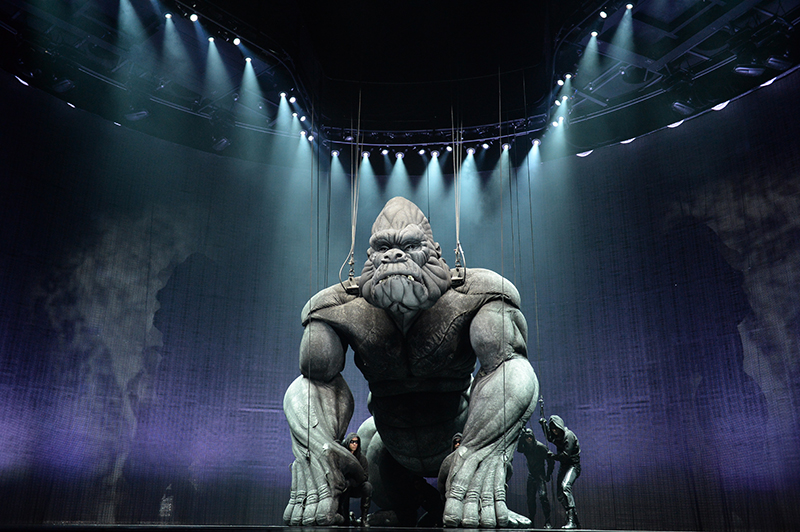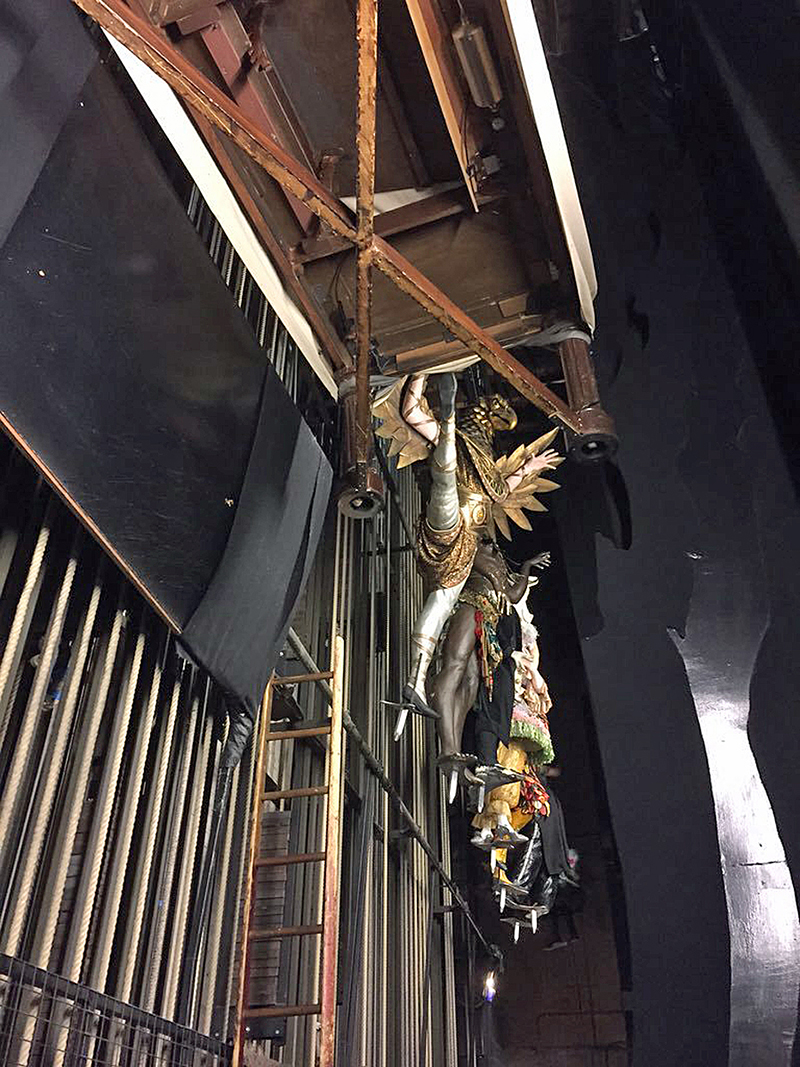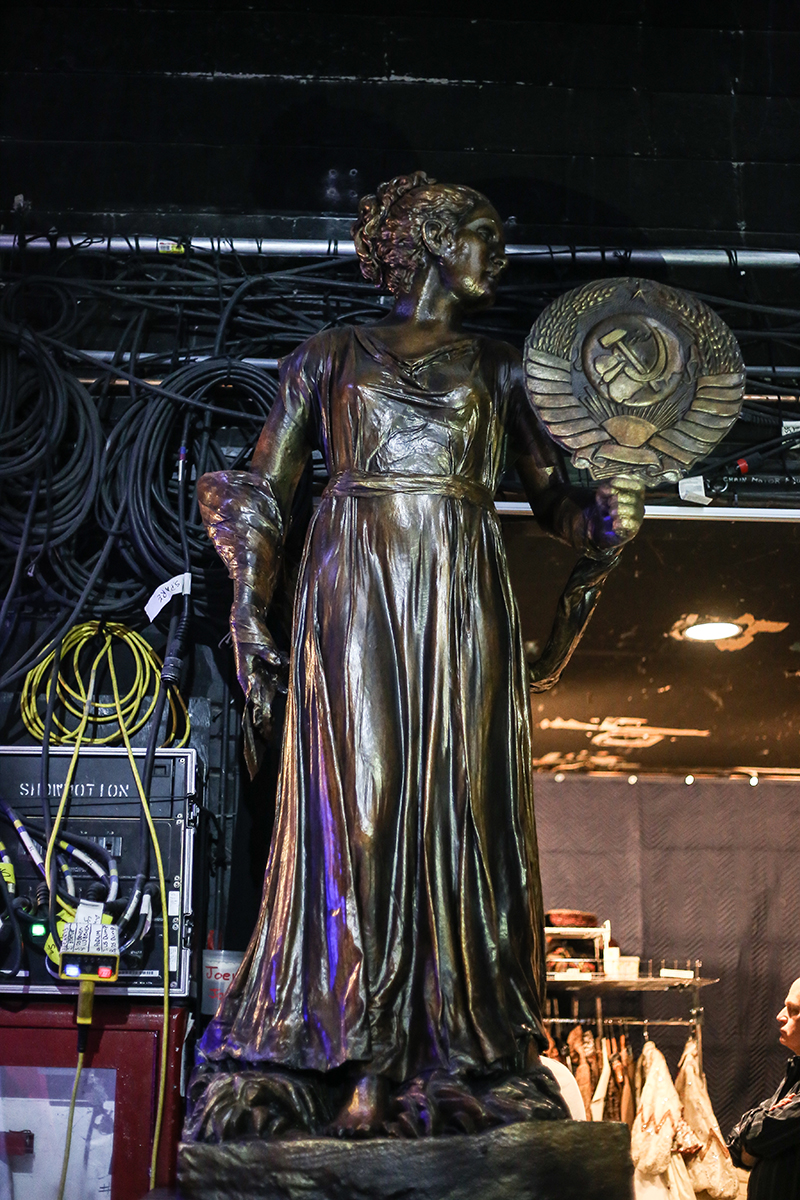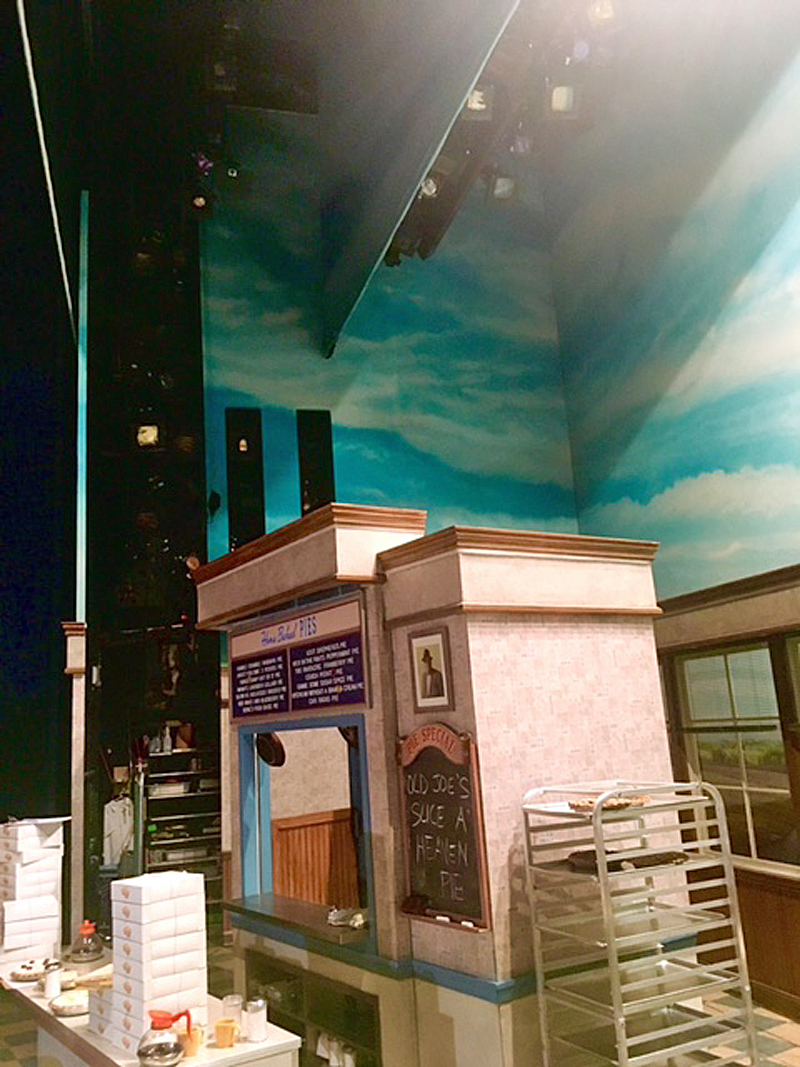
Wing space on Broadway is at a premium. As more and more shows up the ante on production value, scenic designers and production crew are finding more and more ways to be clever about how they utilize the space in and above the wings. The simple fact is that while many producers and creators are getting more ambitious, the theaters themselves are obviously not expanding (and renovations usually cannot help that), so care has to be taken to keep new shows within sustainable parameters. PLSN spoke with acclaimed scenic designers Beowulf Boritt, Anna Louizos and Scott Pask about this perpetual challenge.

Double Duty
Beowulf Boritt has two stock ways to deal with limited wing space. He says the first is to “double-use scenery,” such as having a bar scene on one side of the stage and a bedroom scene on the other. “Then you get two uses out of an object and save space,” he says. “Also, we typically have motor winches in the wings that can pick up items once they come off stage, so we stack scenery vertically two or three pieces high. In the wings of any big Broadway show, you’ll see thousands of pounds of scenery floating off these chain motors over your head.”
He adds that the choreography of how those items go up and down is a show in itself. “The bottom item has to come down before you can access the top item, and you want to run the motors to move the pieces during the loud dance number, not the quiet love scene, so the audience doesn’t hear,” remarks Boritt. “You can also make bigger changes during intermission when you don’t have to be quite as quiet or quite as rushed. These are pretty standard, not unique to me, but it’s part of the equation on how to make it all work.”
When asked if has seen shows where literally all the wing space has been used from the ground level up, Boritt replies, “That’s sort of every big Broadway show, honestly. They’re packed super tight. In Chaplin, the dancers were choreographed to step into nooks in the wings as scenery rolled past on its way on and off stage, all in time to onstage action.”

Tricky Maneuvering
Anna Louizos recalls that for Cinderella’s exit from the ball during the Cinderella musical, “the large upstage balustrade that spanned the entire width of the stage consisted of a series of rolling wagons that operated like train cars — one attached to the other,” she says. “They were stored on a curved track that wrapped around offstage and came together as it moved onstage.”
In another wing, the grand staircase had three segments to it — the stairs terminated at the top with two landings, “each overlapping the other to condense into a smaller footprint offstage,” says Louizos. These segments, when tracked onstage, “would telescope upstage to meet the balustrade just in time for Cinderella to descend the stairs. There was always a moment of holding our collective breaths until that staircase landing met the balustrade.”
While part of the Cinderella set had pieces operating like train cars, Irving Berlin’s White Christmas actually had a large train car onstage for the musical number “Snow.” “It had to break into three segments in order to fit offstage,” recalls Louizos. “It had large pin hinges that allowed the pieces to be attached, but bend offstage in the wings before entering and exiting the stage.”

Get with the Floor Plan
Louizos says that the offstage space at Studio 54 is notoriously small, which was a challenge when she worked on another Irving Berlin show, Holiday Inn. “For the Inn staircase to fit offstage, the piece had to telescope into itself, and the offstage stairs had to be connected once the stairs were onstage,” she explains. For School of Rock, she had to go even further by using space beneath the action. “We had an entire duplicate bed for Dewey and the apartment sofa, both of which came up on an elevator through the stage and stored underneath it.” During Honeymoon in Vegas, the car, subway stairs, airplane seats and pool ladder were all stored under the apron inside the orchestra pit.
Broadway stages tend to have less wing space than outside venues, such as the La Jolla Playhouse in San Diego or the Oriental Theatre in Chicago, where shows often get their initial out-of-town tryouts. Many of these venues have much wider stages, which means that scenic designers working there need to consider the difference in parameters compared with Broadway houses. Scott Pask says that the best scenario, if it is an out of town tryout or intended to be a Broadway transfer, is when one is working out-of-town but with a ballpark idea of which venue they will be booked into in NYC.
“If you don’t have one committed then, in my experience, you look at a range of spaces that the producers are going for, then you hold to that footprint,” advises Pask. He stresses that the technical supervisor’s guidance alongside the design process is important, especially if the show is moving the actual scenery in from out-of-town to the Great White Way. “If it’s a rebuild, or if it’s done as a one-off regional production that suddenly has another life, that’s perhaps another story.”
Many productions have a very specific plan, knowing where the out-of-town tryout will be and then which Broadway house they will land in. Thus the sets are often built in New York, shipped out to their initial destination and then brought back East for the Broadway incarnation.
“You know exactly what the footprint will be, and you put in what’s there,” states Pask. “You may have all this space beyond your footprint or what your deck would be, but you respect the established parameters. We did Mean Girls at the National [Theatre in Washington DC], which was very generous, space-wise. We knew there was an obstruction here offstage [in NYC], and we marked it out so we could respect that, and when we got up here it wasn’t a surprise. It’s just knowing what those parameters are when you’re in the lucky position of knowing that your show is coming in and where it’s going.”
Spatial know-how is indeed power when it comes to Broadway theaters. Pask says that the use of wing space on The Book of Mormon and Waitress is very intricate. The latter show has almost no wing space at the Brooks Atkinson Theatre, but plenty of scenery that must be flown on and off. The touring version of Waitress is different because there is much more space in all the touring venues the show has been visiting. “It just works very simply,” notes Pask. “It’s much more complicated to accomplish what we’re trying to do within the Broadway theater footprint.”
The hardest set piece to deal with in Waitress is the large diner unit which, when slid offstage, must be kept completely out of sight. The turtle that the unit is seated on also helps the automation accomplish its onstage position, thus it is not just a storage mechanism. The diner rotates and then hugs the side wall of the theater to achieve its ideal storage position. “There’s a wall that’s flown when it’s onstage, and then when it goes offstage, it flies up and it tucks in,” says Pask.
Pask is currently working on the forthcoming Broadway musical, The Prom, which also has some tricky maneuvers because of the tight offstage space. “We had tons of space at the Alliance [in Atlanta], but that was done with an eye to here,” he says. “We didn’t force the running crew to store things like they would here because there was more space. We were making the show there so it was reasonable to take the storage complications out of the mix there as our transfer [to Broadway] wasn’t immediate.”
Out of Options? Look Up
New York theater crews are accustomed to hanging things up in the wings and backstage during the show and at intermission. “Many theater centers around the country are built with the luxury of these bigger wing spaces so that they can make their transitions a little easier,” says Pask. “And also because they are accommodating many other types of performance — dance, opera and full onstage orchestral performances.”
The Book of Mormon is another show that is complicated — Pask declares it to be well-mapped, but intricately mapped — because the large amount of scenery that is tracked onstage must squeeze into the wings offstage without interfering with cast member movement. “The irising blue curtain that we use a number of times throughout the night is a challenge,” says Pask. “The trick is to be able to have its tracks extend far enough offstage and wrap around so that the entire stage width of curtain fabric can fit into the wings, and then it flies out when its use is complete to open up the space on the floor for actor traffic backstage.”
Pask describes this traveler track as a complex shape that can backpack on itself in the wings and reveal the onstage scenery, but it cannot fly out until the fabric is entirely out of view. Otherwise “you would be raising the track and the fabric before the reveal is complete,” he says. The track has an accordion-like groundplan that can accommodate all the fabric offstage before lifting out entirely, but it is constrained to the wings. “It doesn’t snake around all of backstage, or it would create obstructions everywhere.”
“We use floor pallets that hold furniture, delivering it onstage from the wings, which is ideally prepared offstage by crew and out of sight,” continues Pask. “If you’ve reduced that offstage wing space to where it’s unworkable, that becomes more of a distraction, with the offstage preparation becoming visible to the audience. I find that you creep on some of these wings a little bit more to protect that important backstage storage and preparation choreography.”
As Pask confirms, overhead storage is traditional and has been a successful method used for many, many years on the Great White Way. It is beneficial because of the high ceilings in Broadway venues. “You take advantage of the hanging space that you do have,” he remarks. “That becomes your storage. If you’re in a gigantic theater on the road and you don’t need it, that’s great, but even wardrobe gondolas can be hung if storage is an issue.”
Sometimes, a single set piece needs a special slot in storage. During Mean Girls, Regina’s bed is stored in the air upstage for 90 percent of the show, and it’s brought to the deck for one bedroom scene. “It comes on through the sliding doors just downstage from its storage position, makes its entrance, and when the scene is complete, it returns upstage and then is immediately hoisted up out of sight once the doors are closed,” explains Pask.
Perhaps the wildest use of overhead storage is in the new King Kong musical. The technical star of the show, Kong weighs a ton and is supported by numerous winches hung from a heavily reinforced ceiling. When he is not onstage, the giant gorilla is literally lifted into the wings to hang up there until he is needed again. It makes one wonder what other large set pieces may be floating above casts in the future.


